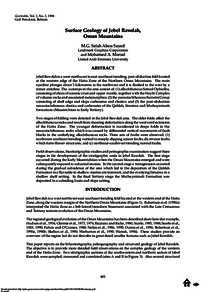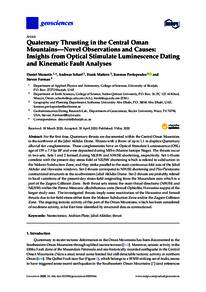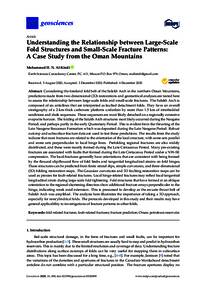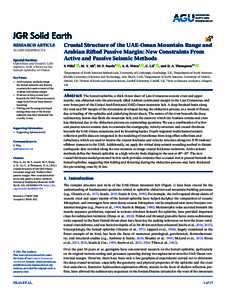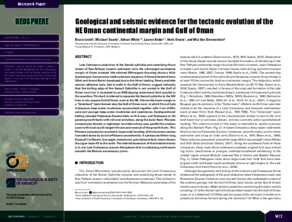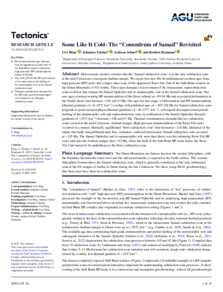Document
Surface geology of Jebel Rawdah, Oman Mountains.
Identifier
DOI: 10.2113/geoarabia0303401
Source
GeoArabia. v. 3, 3, p. 401-414
Contributors
Mersa, Mohamed A. , Author
Country
Bahrain.
City
Manama
Publisher
Gulf Petrolink.
Gregorian
1998-07-01
Language
English
Subject
English abstract
Jebel Rawdah is a west-northwest to east-southeast trending, post-obduction fold located at the western edge of the Hatta Zone of the Northern Oman Mountains. The main syncline plunges about 5 kilometers to the northwest and it is flanked to the west by a minor anticline. The outcrops in the area consist of: (1) allochthonous Semail Ophiolite, consisting of slices of oceanic crust and upper mantle, together with the Haybi Complex of volcanic rocks and associated metamorphics; (2) the parautochthonous Sumeini Group consisting of shelf edge and slope carbonates and clastics; and (3) the post-obduction neoautochthonous clastics and carbonates of the Qahlah, Simsima and Muthaymimah formations (Maastrichtian to Early Tertiary). Two stages of folding were detected in the Jebel Rawdah area. The older folds affect the allochthonous rocks and result from shearing deformation along the westward extension of the Hatta Zone. The younger deformation is manifested in drape folds in the neoautochthonous rocks which was caused by differential vertical movements of fault blocks in the underlying allochthonous rocks. Three sets of faults were observed: (1) northwest-southeast trending vertical to steeply-dipping scissor faults; (b) reverse faults which form flower structures; and (c) northeast-southwest trending normal faults. Field observations, biostratigraphic studies and petrographic examination suggest three stages in the development of the stratigraphic units in Jebel Rawdah. The first stage occurred during the Early Maastrichtian when the Oman Mountains emerged andwere subsequently exposed to subaerial erosion. In the second stage a transgression occurred during the gradual subsidence of the area which led to the deposition of the Qahlah Formation in a fluviatile to shallow-marine environment, and the overlying Simsima in a shallow shelf setting. In the final Tertiary stage the Muthaymimah Formation was deposited in a subsiding basin and slope setting.
ISSN
1025-6059
Category
Journal articles

